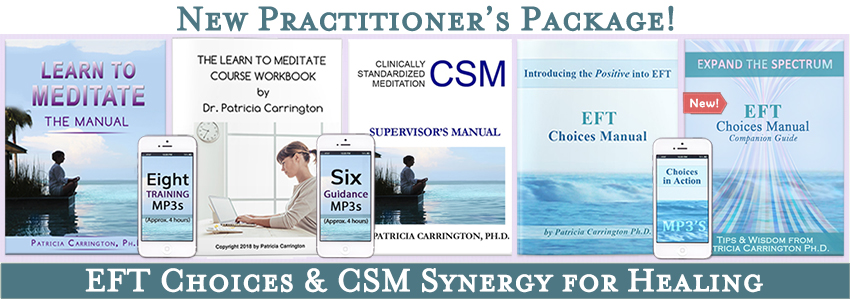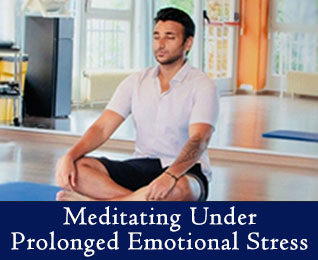 If you have read anything at all about acupuncture, you probably know it is based on the concept of a special flow of vital energy throughout the body. According to Traditional Chinese Medicine (TCM) this energy, or qi, flows through the body along certain invisible pathways called Meridians.
If you have read anything at all about acupuncture, you probably know it is based on the concept of a special flow of vital energy throughout the body. According to Traditional Chinese Medicine (TCM) this energy, or qi, flows through the body along certain invisible pathways called Meridians.
You might also know that according to TCM, all things living possess both yin qualities and yang qualities. Yin is cold, dark, “negative,” and passive. Yang is warm, light, “positive,” and active. Acupuncturists believe that illnesses are a result of imbalances in our yin and our yang aspects, caused by a disruption in the normal flow of qi throughout the living system. In effect, some of the body’s energy circuits have been short-circuited. Stated in one sentence, the premise behind acupuncture can be summed up as: The cause of pain and illness is a disruption in the body’s energy system.
The insertion of needles into strategic points on the skin helps to reestablish harmony within the system by adjusting the flow of qi to correct troublesome disruptions.
At the time of writing this article, no standard measuring instrument yet existed that could demonstrate the existence of meridian pathways in a manner fully acceptable to “hard science.”
However, in a study published in the Journal of Electron Spectroscopy and Related Phenomena, researchers used CT scans (computer x-ray imaging) along with electromagnetic radiation to observe and compare any differences between acupuncture points and non-acupuncture points. They found that acupuncture points contained fine structures with more large blood vessels that non-acupuncture points did not exhibit.
Other research, using MRI (magnetic resonance imaging), and other technological approaches, such as infrared imaging, LCD thermal photography, ultrasound and other various imaging methods has also suggested that acupoints, special areas throughout the body in mammals, do indeed exist.
While the meridian theory, on which acupuncture is based, can sound quaint and indescribable to some people, and it seems easy to dismiss acupuncture entirely, one stubborn fact makes it difficult to dismiss.
It works.
Acupuncture Benefits
Acupuncture is used successfully in both the East and West to treat a wide range of ailments, including:
- Headaches
- Nausea
- Depression
- Sinus infections
- Muscle sprains
- Skin conditions
- And, numerous other distressing conditions.
Pain management is a major application in hospitals in both the East and West, even those that otherwise operate conservatively. Western visitors to China have been stunned to see open-heart surgery performed on smiling, wide-awake patients whose only anesthesia is a cluster of thin needles in the ear. Many other anesthetic applications of acupuncture are now being used in hospitals in the United States and elsewhere.
Because acupuncture does not mesh with our modern Western view of anatomy and physiology, however, we are quick to attribute its positive results to “placebo” effects – it works because patients want it to work. But then, how do we explain the effectiveness on animals? Acupuncture is being adopted more and more by veterinary medicine in many countries throughout the world. Increasingly, veterinarians are using tiny needles to treat dogs, cats, horses, and other creatures for problems such as chronic pain and arthritic stiffness, when other methods fail. Presumably, racehorses and show dogs don’t have belief systems and hidden agendas. Something else must be a work here.
Body Energy
To shed light on this mystery, let’s look at how medicine presently conceives of the human body. Is the ancient idea of the body as a system of energy pathways really so inconsistent with modern views? If the concept of vital energy is so alien to us, why then do we hook up patients to electronic sensors to monitor their “life-force”? Why is a flat line on an ECG machine (meaning “no electrical activity”) such a disturbing thing to see in a hospital room? And, why do we jump-start hearts of fellow human beings with scary-looking electric paddles?
The fact is, the human body – life itself – can easily be seen as an elaborate energy system. What is a nerve impulse but a form of energy known as electricity traveling along a pathway? What is an ECG or an EEG but the measure of the electrical activity (the energy) of the heart and brain? Every organ and body system seems to have its corresponding energy field and pathways. U.S. Army tests have measured the electromagnetic field of the human heart as it extends up to eight feet outside of the body. These fields and currents are measurable, tangible. Without the continuous flow of life energy through the body, there is no life.
Ultimately, energy is life. Life is energy. They are one and the same.
Energy Rules
One of the great discoveries of the 20th Century is that everything in the observable universe is made up, essentially, of energy. Einstein taught us that matter and energy are interchangeable – ultimately they are one and the same thing. Matter, thought waves, water, radio waves, behaviors such as laughter, or emotions such as sadness are really not different things, but may be different arrangements of something far more subtle and essential. Quantum physicists now see matter as actually wave energy “locked” in a particular form by our act of observation. It is energy that is “frozen” as we experience it because our senses are designed to perceive it to be that way.
Today, most of us are still mesmerized by the tangible and visible. Despite a century of science that has dethroned matter as the ruling monarch of reality, we still cling to the old model of the world that Sir Isaac Newton embraced – a world of colliding billiard balls causing an endless physical chain of actions and reactions that seem to continue to infinity. We still see things as more real and more worthy of attention than energy. We are in love with the dense, the thick, the heavy, and the visible.
Naturally, this determines our views of health and medicine. We tend to identify organs, bones, and chemicals as our primary target when practicing medicine. Human energy is seen as little more than an inconvenient discharge given off by the “real stuff.”
However, what is it that animates our bones and muscles? What is the “ghost in the machine” that separates a living, breathing human being from a medical school cadaver? Isn’t this invisible, energetic aspect of who we are worthy of at least as much attention as the nuts and bolts that we can see and touch? Is the TV show at least as interesting as the TV set? Isn’t that which defines us as alive at least as important as that which accompanies us beyond the physical grave – our bones, hair, and teeth?
Fortunately, the answer has shifted to “yes.” The old model has changed. Over several decades, experimental studies and well-documented medical cases have forced us to acknowledge some telling challenges to so-called “hard” science.
Notable Studies
A landmark study of 393 hospitalized post-surgical cardiac patients, conducted by Randolph Byrd in 1988, showed that prayer directed at those patients (unbeknownst to the patients and at a distance) resulted in significantly faster and more complete recovery in those patients prayed for versus those who were not.
In research conducted in 1980 by Jeanne Achterberg, subjects were able to increase the production of specific types of white blood cells (T-cells and neutrophils) by using visualization techniques and nothing else.
In 1974, Robert Ader fed a group of lab rats an immunosuppressive drug mixed with sweet-tasting saccharin. He then switched to saccharin only and was amazed to discover that the rats continued to suffer immune system deficiency. By simple conditioning, he had turned a harmless chemical into poison. It’s mind over matter, even in rats.
In the 1980’s, Herbert Benson conducted a series of studies of monks in the Himalayas, who, by practicing a yogic technique known as Tum-mo, are able to raise and lower their own body temperature at will. Monks sitting in a 40-degree room, wrapped in cold, wet towels (conditions ideal for developing hypothermia) were able to dry the towels with their body heat, actually making them emit steam.
One could fill a book with discoveries and baffling experiments such as these. What they share in common is that they debunk the myth of material things as the overriding influences in our lives and suggest that subtle and invisible energy is a key factor in the management, growth, and support of life. “Soft” science may finally be fusing with hard sciences.
Enter Emotional Freedom Techniques
Emotional Freedom Techniques, also known as EFT, EFT Tapping, and Meridian Tapping, is a powerful self-help process (learn EFT) that combines the energy healing principles of acupuncture with modern psychology, in short form and without the use of needles. Rather it uses light tapping on key meridian points. (Learn about the early developmental history of EFT and browse multiple studies on EFT.)
After using EFT extensively with clients, I developed the EFT Choices Method for my clinical purposes, which implemented Choices Affirmations instead of the original EFT default phrase. Using Choices proved to be astonishingly more effective for most of them. It’s all about energy….
Related Product
The Power of Personal Choice in EFT
You’ll find a basic introduction to the EFT Choices Method in this eBook and be well on your way to mastering this popular self-help technique.








Pingback: Tapping for Fears and Phobias | PatCarrington.com